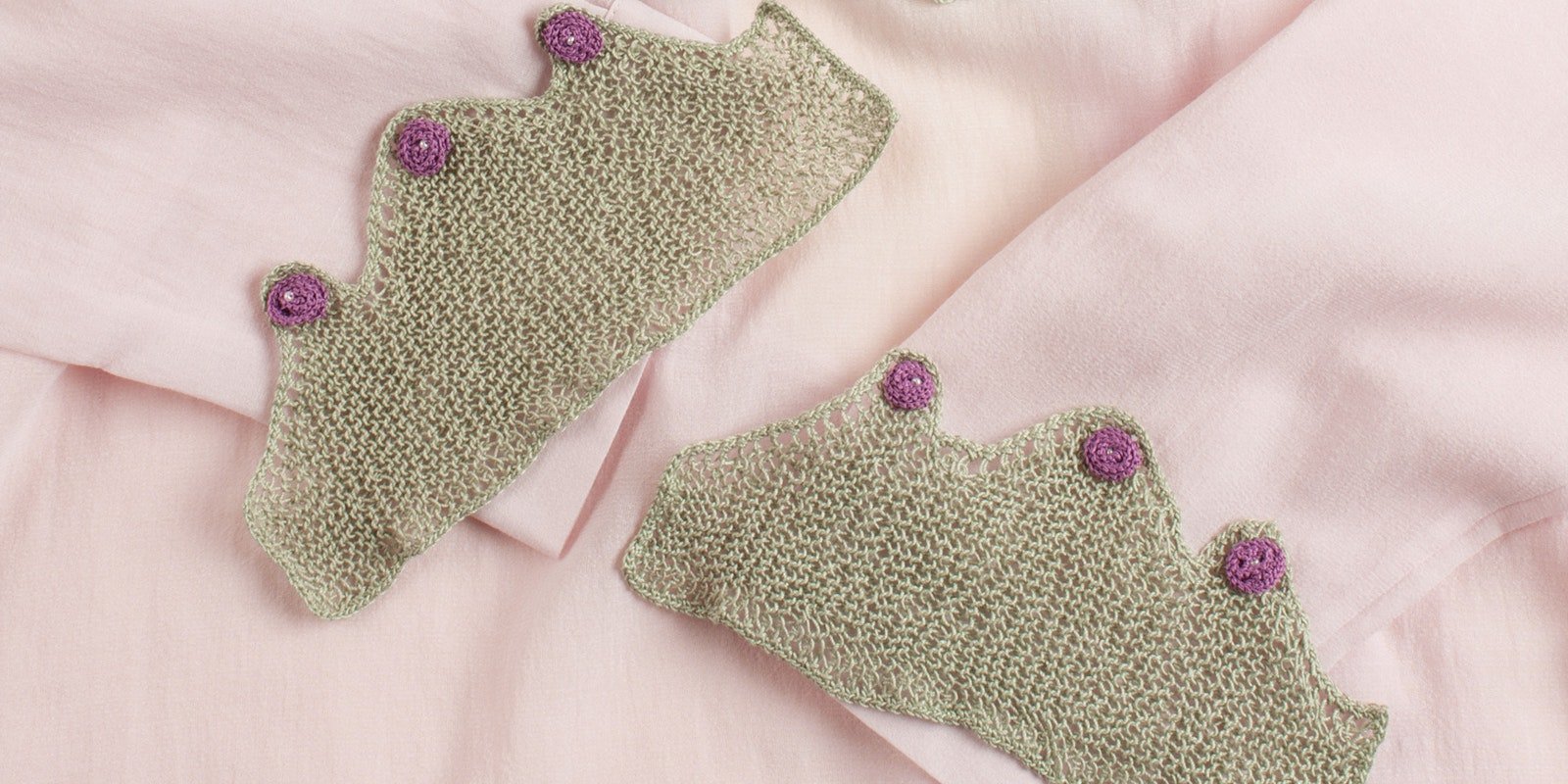On July 19 and 20, 1848, two prominent American women, Lucretia Mott (1793–1880) and Elizabeth Cady Stanton (1815–1902), organized the Seneca Falls Convention. Billed as “a convention to discuss the social, civil, and religious condition and rights of woman,” the convention’s formal “Declaration of Sentiments” included the suffrage resolution demanding a woman’s right to vote. Accounts vary on the number of people who attended the convention, but most sources agree that about 300 women and men took part.
 Ava T. Coleman’s knitted Suffragette Collar and Cuffs. Photo by Ann Swanson
Ava T. Coleman’s knitted Suffragette Collar and Cuffs. Photo by Ann Swanson
In a tribute to the suffragette movement, Ava T. Coleman designed her Suffragette Collar and Cuffs for the Fall 2012 issue of PieceWork’s special publication, Knitting Traditions. Ava has a personal connection to the suffragette movement that inspired her design:
“A family photograph that my grandmother gave me nearly fifty years ago reminded me that collars and cuffs have at times had a more important role than merely finishing off a woman’s costume. This was brought home to me further when I saw an appraiser on the PBS British Antiques Roadshow identify a small rosette containing pink, white, pale green, and purple stones as representing the official flower (the rose) and colors of the British Women’s Suffrage movement from the early twentieth century.
As a high school civics student in 1964, I asked Grandma if she would be going to vote in the coming presidential elections. She answered that she and Grandpa had always supported the right of women to vote and that she had worn “the colors” to let others know how she felt. She related how Grandpa had accompanied her to vote in her first election because he still wasn’t sure how women would be received at the polls, even in Grand Junction, Colorado. Although the Nineteenth Amendment had been ratified in 1920, it hadn’t been that long since police in numerous American cities had arrested and jailed women who demanded their right to vote. Many had been beaten or otherwise mistreated while in custody.”
 Photograph of Robert, Bonnie, and Leona Colescott, Ava T. Coleman’s grandfather, mother, and grandmother. Photographer unknown. 1929. Leona is wearing her suffragette collar.
Photograph of Robert, Bonnie, and Leona Colescott, Ava T. Coleman’s grandfather, mother, and grandmother. Photographer unknown. 1929. Leona is wearing her suffragette collar.
Photo courtesy of Ava T. Coleman
Ava’s photograph shows her grandfather, grandmother, and their daughter, Bonnie (who would become Ava’s mother). Her grandmother is wearing “the colors” (her ribbon-embellished suffragette collar). As a tribute to British suffragettes, Ava worked her companion knitted collar and cuffs project in their colors: white, pink, green, and purple with rosettes representing the movement’s flower, the rose.
To learn more about women's suffrage and to knit Ava’s project, visit the Fall 2012 issue of Knitting Traditions. To learn about the needlework of the 1900s Suffrage Fair, including Lucretia Mott’s knitting, visit the November/December 2015 issue of PieceWork.
Also, remember that if you are an active subscriber to PieceWork magazine, you have unlimited access to previous issues, including November/December 2015 and Knitting Traditions Fall 2012. See our help center for the step-by-step process on how to access them.

